Shumai vs. gyoza | Both dumplings, but more different than similar
Do you like dumplings? If you’re a fan of Asian cuisine, then you must’ve tried dumplings filled with delicious meat and vegetables.
Shumai, also known as “siu mai”, is a Japanese adaptation of Chinese steamed dumplings, whereas gyoza is a similar type of adapted Japanese fried dumplings.
Although they’re similar, shumai and gyoza are different in taste because shumai is usually filled with pork or prawn meat, whereas gyoza is filled with ground meat and vegetables. Both types of dumplings are served alongside savory soy and vinegar dipping sauces.
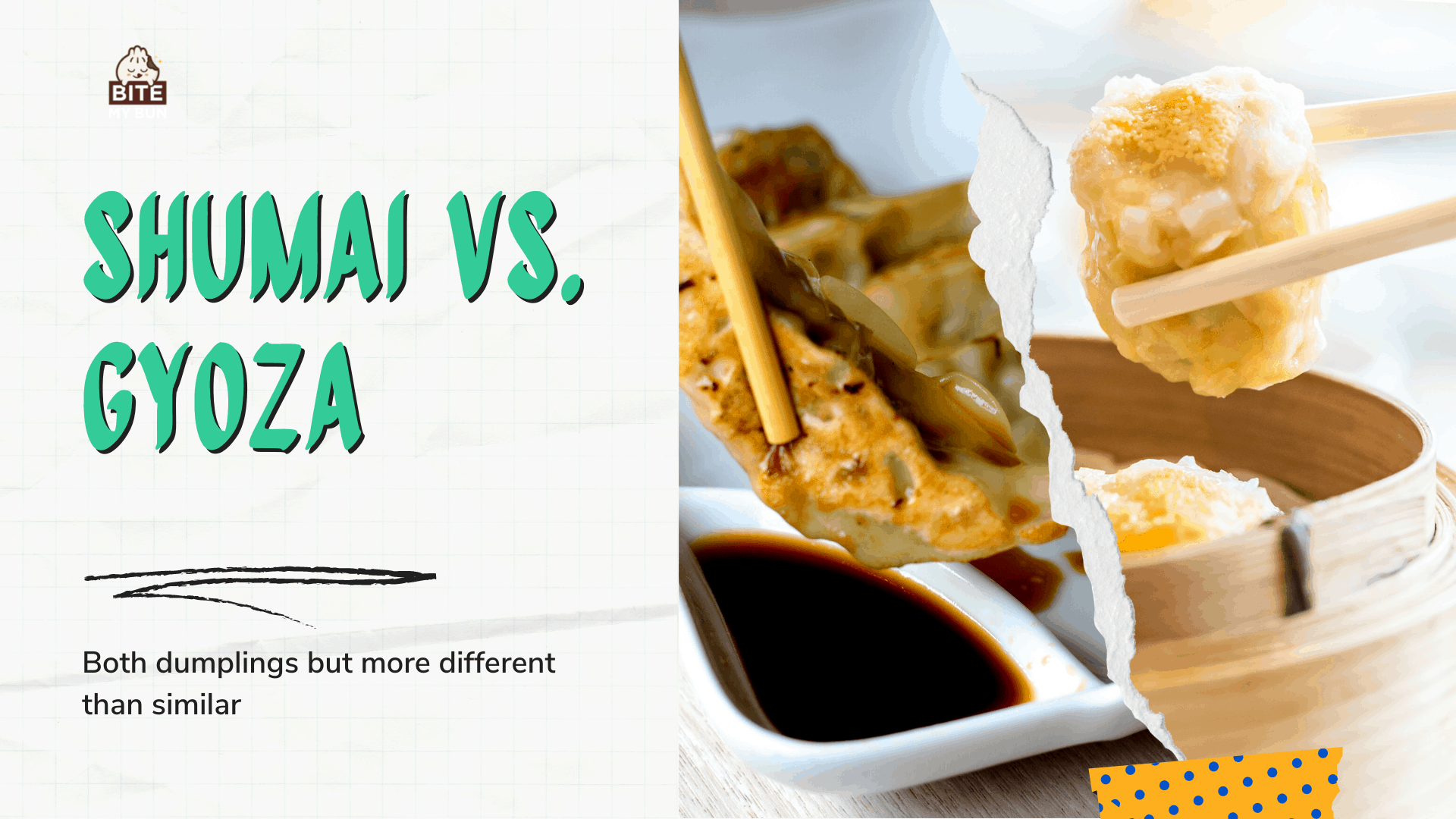
Japan borrowed the Chinese siu mai recipe, and now it’s called shumai. The dumplings are usually called “steamed pork dumplings” in Western restaurants.
Gyoza is a Japanese dumpling based on the Chinese jiaozi, and it’s one of the most popular snacks and side dishes in Asia and America.
So you’re likely wondering what else the dumplings have in common and how they differ. That’s why I’m going to describe them further!

Check out our new cookbook
Bitemybun's family recipes with complete meal planner and recipe guide.
Try it out for free with Kindle Unlimited:
Read for freeIn this post we'll cover:
What is shumai?
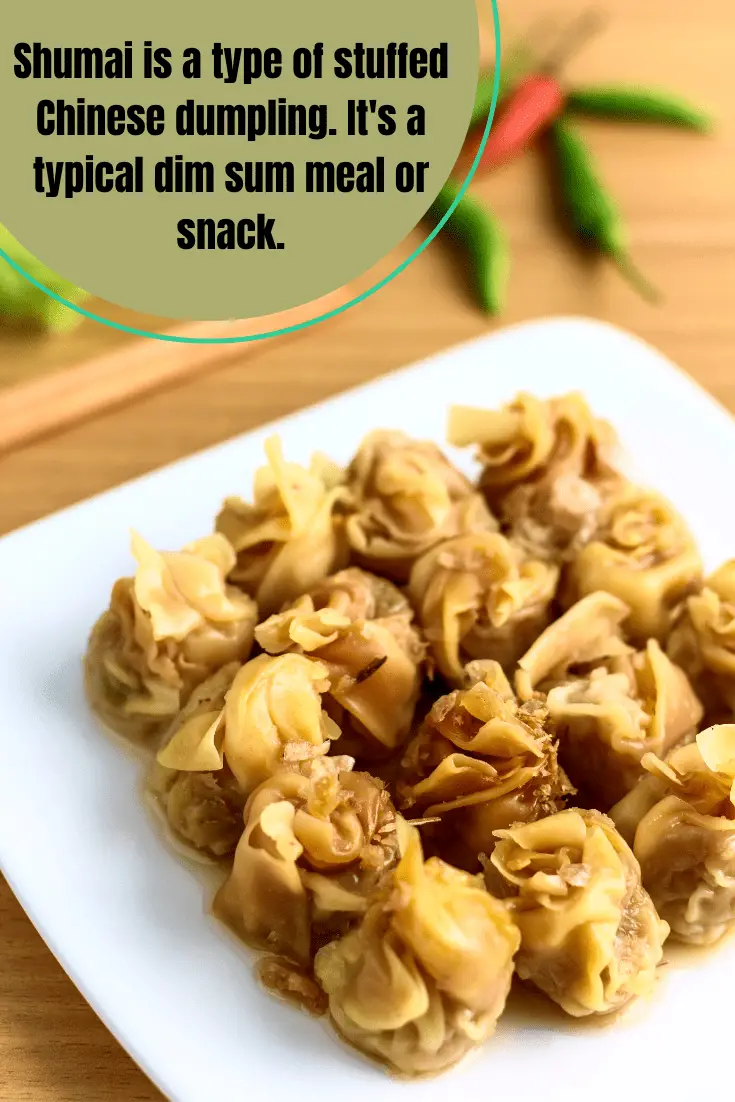
Shumai (シュウマイ) can also be spelled as siu mai, and it refers to a type of stuffed Chinese dumpling. The most common filling for shumai is either pork or prawn meat.
It’s a typical dim sum meal or snack, and each dumpling is cooked by steaming. In Chinese dim sum dishes, a variety of dumplings with various fillings are served in bamboo steamers.
Many Japanese people like to make shumai at home as a side dish or snack. Also, some like to add some hot mustard to add extra flavor, while others stick to the traditional soy and vinegar sauce.
Siu mai is an open-top dumpling with a cylindrical shape and a thin wheat dough wrapper. The shumai are topped with some orange roe, green pea, or carrot (to add color).
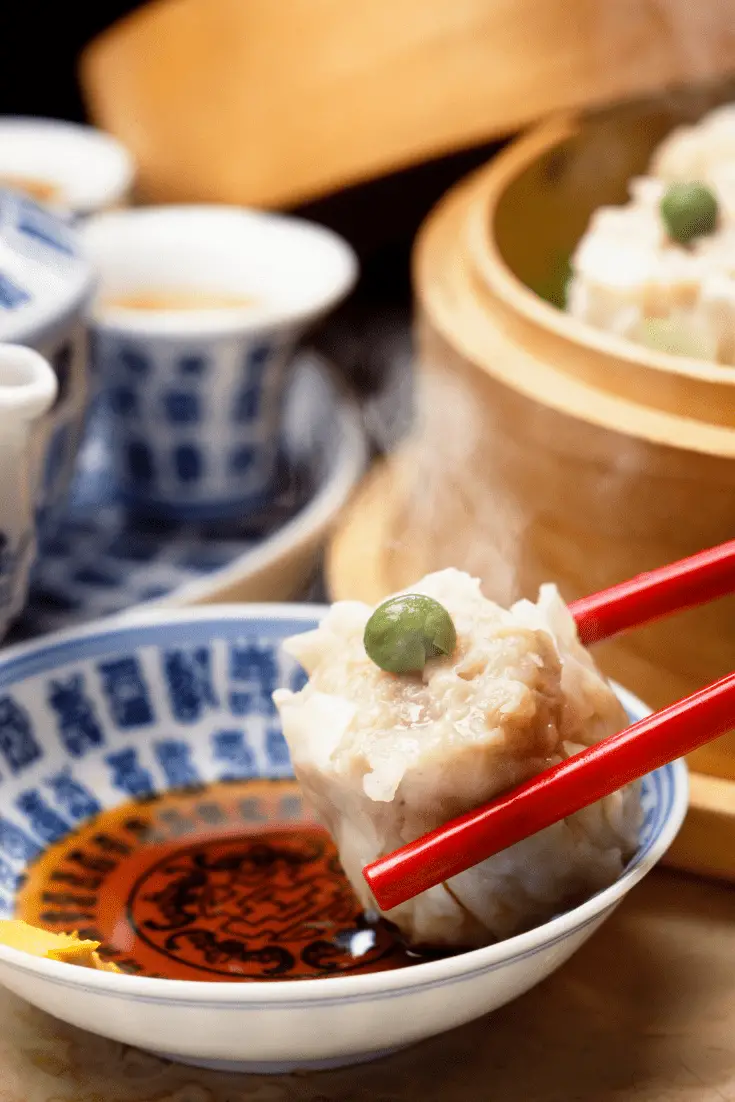
Each dumpling is steamed on a bamboo steamer basket, and these dumplings aren’t fried.
The traditional Cantonese version of these dumplings (siu mai) is filled with ground pork, shrimp, mushrooms, ginger, and spring onions.
Japanese shumai is often a bit more simple and contains ground pork, green onions, and only a few condiments.
One thing that makes Japanese shumai distinct from Chinese siu mai is that the Japanese top each dumpling with one green pea as a final decorative touch.
Usually, shumai is served with other kinds of stuffed dumplings, especially har gow, another common Chinese dumpling.
Shumai dipping sauce
While there’s no official dipping sauce, the shumai sauce of choice is lots of soy sauce mixed with a bit of vinegar and chili oil.
The sauce is great for dumplings because the salty soy sauce pairs well with the wonton egg pastry dough, which is relatively flavorless.
Origin of shumai
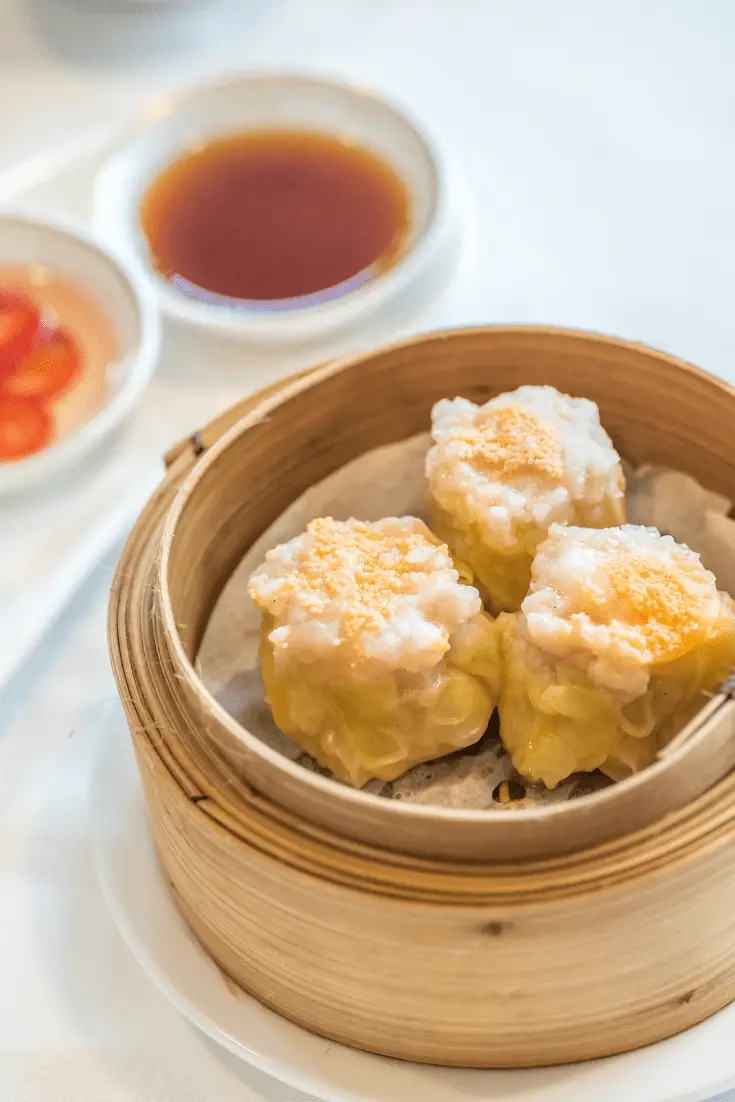
Shumai actually originates in Guangdong, China. The name translates to something along the lines of “cook” and “sell,” indicating that this type of food is cooked and consumed quickly.
Dumplings were a popular dish at tea houses along the Silk Road in the Cantonese region of China.
Shumai has been around in Japan since 1928, when a Yokohama restaurant popularized it.
Kiyoken (崎陽軒) is the Chinese restaurant that began serving some of the best shumai in Japan in the 1920s, and the popularity of those dumplings spread throughout Asia.
Yokohama Chinatown is Japan’s largest, and you’ll find all kinds of fusion foods there, mostly Chinese foods that are reinterpreted.
For more Asian steamed goodness, try these 3 amazing Japanese steamed bun (Nikuman) recipes
What is gyoza?
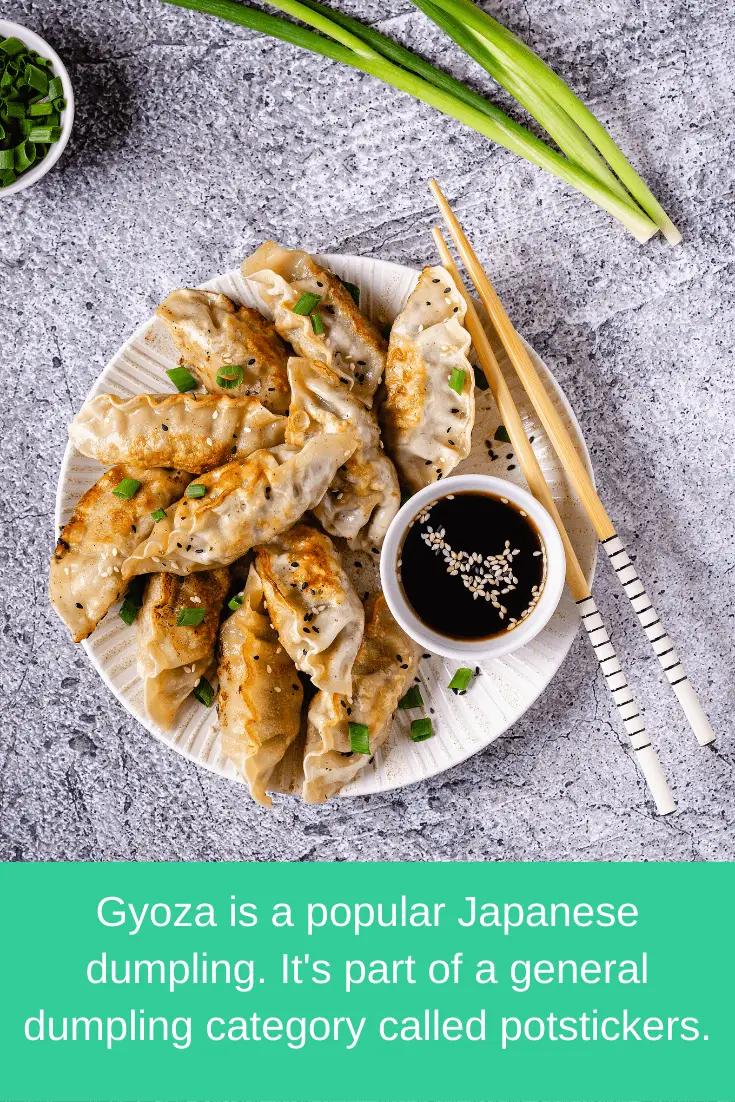
Gyoza is a popular Japanese dumpling with a thinner dough. It’s also half-moon-shaped with pressed edges. Gyoza is part of a general dumpling category called potstickers.
Unlike steamed-only dumplings, gyoza is first pan-fried until it has a crispy exterior, then water is added to the pan to steam it.
The most common filling for gyoza is minced meat (usually pork) and vegetables, mainly cabbage, green onions, and some ginger.
Shrimp gyoza is also very popular, but pork is the traditional Japanese filling.
You’ll find gyoza served as an appetizer, snack, or part of a bento lunch. Many Japanese families also like to make gyoza as part of a quick weeknight meal.
But you can also find gyoza at izakaya (Japanese pubs), festivals, street food stalls, and supermarkets. It’s the kind of dish that people eat on the go when hunger strikes.
In terms of taste, gyoza is great because it has a unique texture. The bottom of the dumpling is crispy, the top is very soft and tender, and then the meat inside is juicy!
Gyoza sauce
Gyoza dumplings are served alongside a tasty dipping sauce. It’s made of half soy sauce and half vinegar, with some chili that adds a hint of spiciness to this otherwise savory sauce.
Gyoza sauce has quite a balanced flavor, and it doesn’t overwhelm the yummy dumpling fillings.
Origin of gyoza
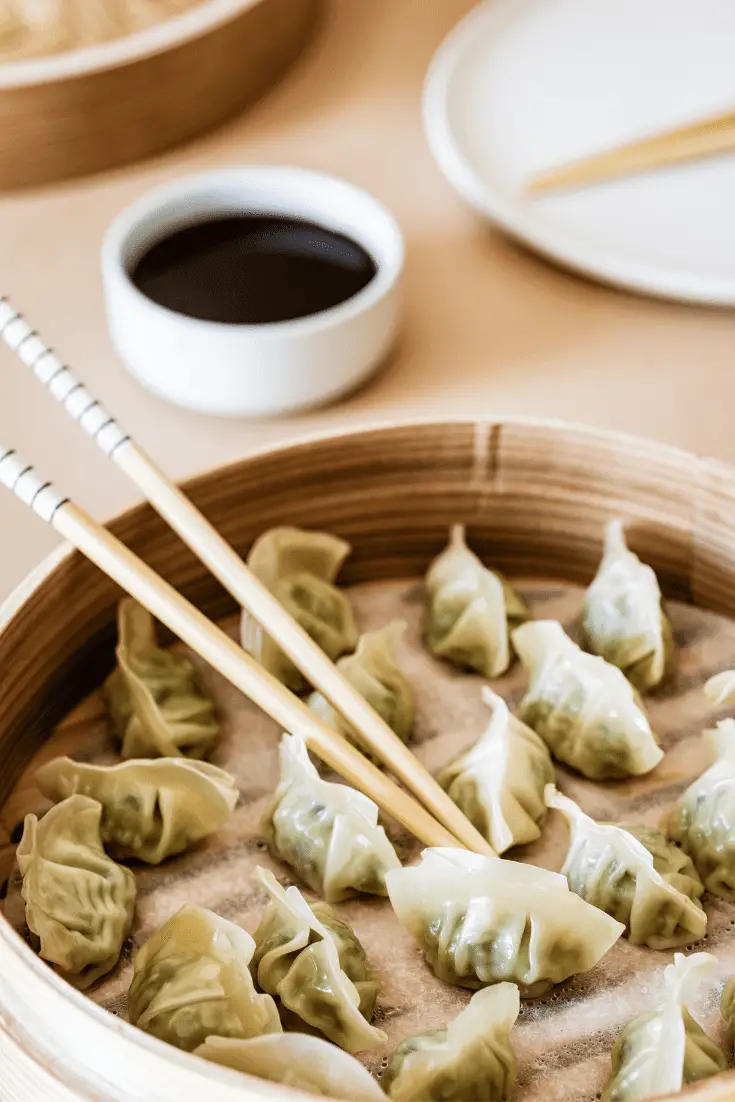
Gyoza is also a reinterpreted version of a Chinese dumpling called jiaozi (餃子).
It’s believed that a practitioner of Chinese medicine named Zhang Zhongjing created jiaozi dumplings to treat frostbite.
He used the steamed dumplings (usually filled with lamb) to warm up people’s frozen ears and limbs. Interesting and odd, right?
Japanese soldiers brought the jiaozi recipe from China during World War II. It quickly became “gyoza”, and the fillings were adapted and changed.
Thus, compared to other Japanese recipes which are centuries old, the gyoza is a tasty 20th-century invention.
Love food origin stories? You’ll love learning about the surprising origin of teriyaki!
Shumai vs. gyoza: similarities
When people think of dumplings, many think they all fall into the same category. But shumai and gyoza are actually more different from each other than alike.
They’re similar because they’re made with the same thin wheat flour wrappers. Also, pork is a common ingredient in both, and these dumplings are both served with a savory dipping sauce.
Shumai vs. gyoza: differences
There are some notable differences between gyoza and shumai, and it has to do with different dough thickness, taste, and fillings.
The one main difference between shumai and gyoza is that gyoza is usually filled with pork, while shumai is often a combination of pork and prawn filling.
Appearance and shape
The shape and texture of Chinese and Japanese dumplings are different.
Shumai has a cylindrical shape or nearly round shape with a flat bottom. Some people say it looks like a basket bag or that the dumplings look like small pouches.
Gyoza has a half-moon shape with a pleated design, and it sits flat. The edges of each dumpling are pressed.
Both dumplings have a soft dough texture, which is a bit chewy and off-white color.
Taste
There are many varieties of gyoza and shumai. Ground pork and vegetables or fried pork meat is the most common. Prawn, chicken, beef are also tasty options.
Most dumplings are savory and usually dipped in a soy-based sauce.
Shumai has a savory, meaty flavor with hints of ginger and scallion. Some recipes call for chili, which makes the dumpling spicy.
Gyoza is also savory, but the combination of minced meat and vegetables (usually napa cabbage) makes it crunchy when you bite into a dumpling.
Cooking method
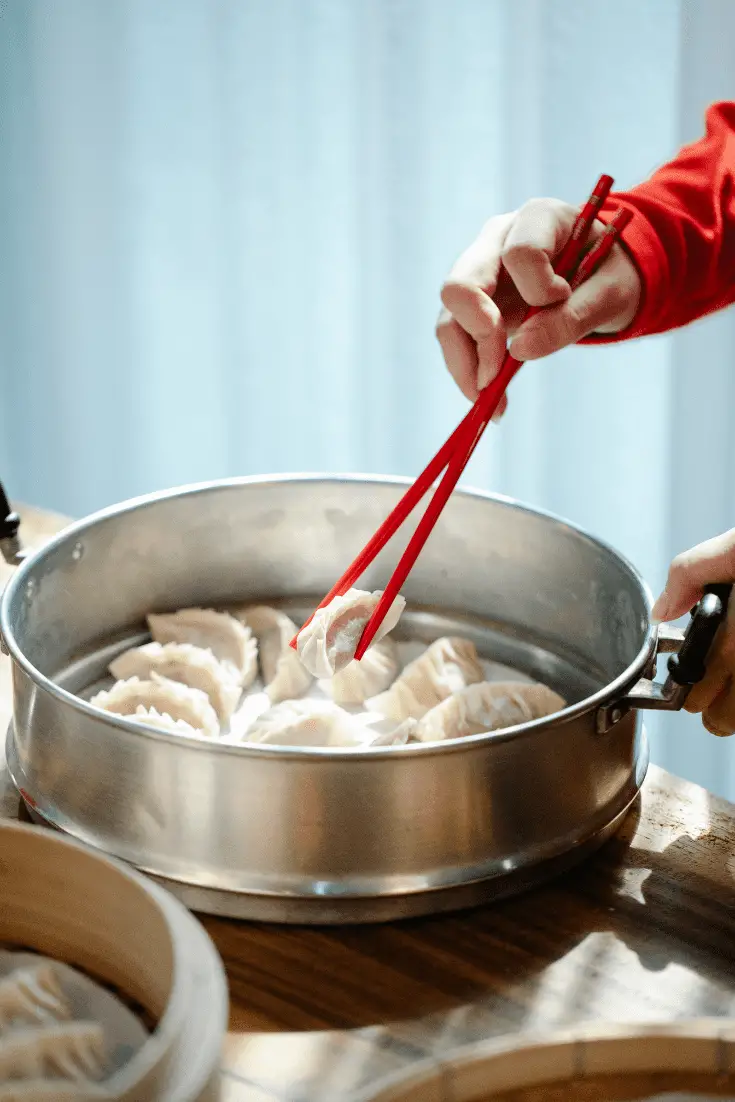
Shumai dumplings are steamed on a bamboo steamer. To do this, a wok or pot of water is heated until it boils.
Then, the shumai is placed inside the bamboo steamer. The steamer is placed over the pot, and the dumplings are steamed for about 8 to 10 minutes.
Gyoza are fried dumplings, and that’s why they’re different from Chinese steamed dumplings.
Each gyoza is fried in a saucepan in vegetable oil until it develops a crispy brown exterior. Then, water is added to steam the dumplings, making them tender.
The cooking time is very short (about 3 minutes), and to make each gyoza moist, some chefs add a little water to the pan.
More on Chinese food vs Japanese food | 3 main differences explained
How to store gyoza and shumai
What’s great about these dishes is that you can make big batches of gyoza or shumai and then store them in the fridge to eat later.
You can refrigerate the dumplings for a couple of days or put them in the freezer for a couple of months at least.
The key to freezing dumplings is to place them in an airtight freezer bag. Then, when you’re ready to reheat them, pop them in the microwave.
What’s healthier: shumai or gyoza?
If you want to determine which type of dumpling is healthier, it’s important to consider how it’s cooked: steamed, pan-fried, or deep-fried. Steamed dumplings are healthiest because they’re not fried in fatty oil.
Next, take a look at the ingredients. Meaty dumplings filled with pork aren’t the healthiest option, but they aren’t an awful meal choice. Dumplings filled with vegetables are the best option for weight loss.
Therefore, out of the 2, shumai is healthier because it’s steamed and not pan-fried like gyoza.
A single piece of shumai has approximately 57 calories, whereas one piece of gyoza has about 64.
But with both dishes, watch out for sodium and high fat content. The soy dipping sauce is a big source of extra sodium.
Which is more popular: gyoza or shumai?
It’s hard to say one is more popular than the other in the US, but shumai and gyoza are both popular dishes at Asian restaurants.
Shumai is a big part of the dim sum experience. Although many people are unfamiliar with the name of these dumplings, the basket shape and decorative roe are easily recognizable.
Gyoza is slightly more popular because the flat half-moon shape is a favorite potsticker at Japanese restaurants. Almost everyone recognizes these iconic dumplings, and the fact that they’re also fried makes them even tastier.
Have a bite of a tasty dumpling
It all comes down to personal preference, but you can’t go to an Asian restaurant and skip shumai or gyoza because those dumplings are so tasty!
If you’re trying Japanese shumai, you can expect a tasty ground pork filling. Whereas if you have gyoza, you can expect a pork and veggie-filled dumpling with a crispy exterior.
Both are yummy, so I recommend trying some of each!
For more inspiration, here are 43 of the best, most delicious & unusual Asian food recipes to try
Check out our new cookbook
Bitemybun's family recipes with complete meal planner and recipe guide.
Try it out for free with Kindle Unlimited:
Read for freeJoost Nusselder, the founder of Bite My Bun is a content marketer, dad and loves trying out new food with Japanese food at the heart of his passion, and together with his team he's been creating in-depth blog articles since 2016 to help loyal readers with recipes and cooking tips.
